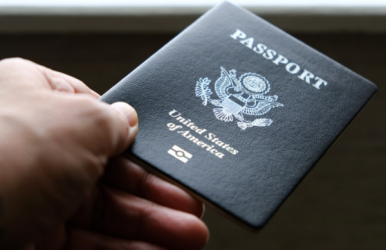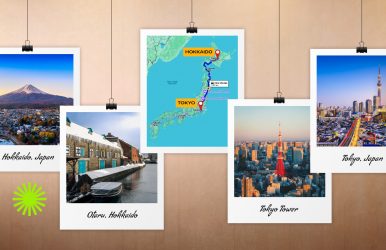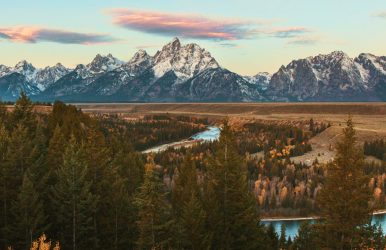The Benefits Of Having A Passport | Did You Know These
BY Sibashree Jan 17, 2025
A passport is not just a travel document but a key to unlocking a world of opportunities. While it primarily serves as a means of identification when crossing international borders, having a passport is also crucial for getting emergency assistance and crucial services. Moreover, it is an important document for career advancement in another country and ensures personal freedom. As a tourist, you must be aware of all the other benefits of having a passport so that all your rights are reserved, you remain protected during travel, and you stay abroad. Benefits Of Having A Passport You Did Not Know When something like a passport has been there since the time of the Bible, you must know how important it is. The Book of Nehemiah mentions that everyone needed a royal travel document from King Artaxerxes I of Persia for travel. Nevertheless, according to popular versions, King Henry V made traveling with passports official. Again, with time, many perks and benefits were added as the advantages of having a passport. And here, we will discuss them in detail. 1. International Travel Opportunities One of The most obvious benefits of having a passport is traveling internationally. With a valid passport, individuals can visit countries worldwide, whether for leisure, work, or study. Traveling abroad provides an enriching experience, exposing people to different cultures, languages, and landscapes. It fosters personal growth, broadens perspectives, and creates memories that last a lifetime. Whether it’s a vacation to a distant beach, a cultural tour in Europe, or exploring a new city for work, a passport is your ticket to adventure and discovery. If you have an upcoming trip and your passport has expired, you can apply for emergency passport replacement with expedited services. 2. Career Advancement In the modern workplace, international experience is often seen as a valuable asset. Many employers seek individuals who can work across borders, manage global teams, or interact with international clients. A passport lets employees take advantage of business opportunities abroad, attend international conferences, or work on overseas projects. Whether you’re moving to a new country for a job or simply taking a short business trip, having a passport can open doors to career advancement and networking opportunities that may not be available without it. 3. Educational Opportunities Unlocking educational opportunities in foreign countries is one of the prime benefits of having a passport. Many students choose to study abroad, whether to earn a degree or participate in exchange programs. Having a passport is a prerequisite for enrolling in such programs and allows students to gain exposure to different educational systems, research opportunities, and career paths. Study abroad experiences often enhance personal development and improve academic performance, making students more competitive in the job market upon their return home. Moreover, students can build a global network, establishing lifelong friendships and professional connections. 4. Easier Access To Healthcare And Services While having a passport is not a direct gateway to health insurance or services, it can make it easier to access medical care while traveling. Many countries offer reciprocal healthcare agreements, which allow citizens of certain countries to receive medical treatment while abroad. For instance, some European countries provide emergency healthcare to travelers from other member states. In addition, having a passport makes it easier to apply for travel insurance, which often includes health coverage for medical emergencies abroad. 5. Emergency Assistance Abroad In times of emergency, a passport is crucial for obtaining assistance from your home country’s consulate or embassy. If you lose your passport, encounter legal trouble, or experience an emergency while abroad, your embassy can assist in arranging a replacement passport or help with emergency services. Having a passport means you have a lifeline to diplomatic and consular support, making your travels safer and less stressful. 6. Identity And Security A passport serves as an official proof of identity, particularly useful when dealing with immigration authorities or international institutions. It provides a standardized and secure form of identification that is universally recognized. This helps reduce the risks of identity theft, as passports often come with sophisticated security features, such as biometric data, that make them difficult to forge or alter. 7. Romance Beyond Borders Yes, in this world of Meta, Tinder, and everything digital, you may find your soulmate across borders. So, it’s an international romance, and every time both of you plan to meet and either of you travel, you will need a passport. Further, it’s not just about finding a partner beyond the borders of your country. You may plan to fly to exotic locations for pre-wedding shoots, destination weddings, or even a dream honeymoon. Irrespective of the purpose of the international travel with your partner, both of you will need a visa. 8. An Autobiography Or A Travel Saga Someday… Are you an avid traveler? How many times has your passport been stamped? These stamps can be your pride and like keeping track of the places you have visited. So, a few years later, your passport can be a memoir for you. Those stamps can vouch for your achievements as a traveler. When you write an autobiography or a travel saga, your passport will be like the reference book. 9. Passport For Someone Always On The Move One of the benefits of having a passport is readiness. Suppose your parents live in another country or your company headquarters is elsewhere. Whenever there is a requirement, you will have to rush. If you have a passport, you will be ready for these sudden travels. However, always be particular about the expiration date of your passport. You must make it a point to renew your passport at least six months before expiration. 10. Legal Safety And Better Child Law Protection Does your child have a passport? It can ensure better legal protection for them. Unfortunately, divorce cases are very common these days, and a lot of couples fight over child custody. If your ex-partner lives abroad and there is an ongoing custody battle or incidents like kidnapping around it, a passport is crucial to fly with your child to safety. It’s very easy to get a passport for a child. So, you must apply and get one for them. Also read Top 10 Most Popular Paraguay Food That You Must Try. Top 13+ Famous Wonders Of India That You Must Visit. Top Tips For Motorbike Rental In Phuket – A Guide To Exploring The Island On Two Wheels.












